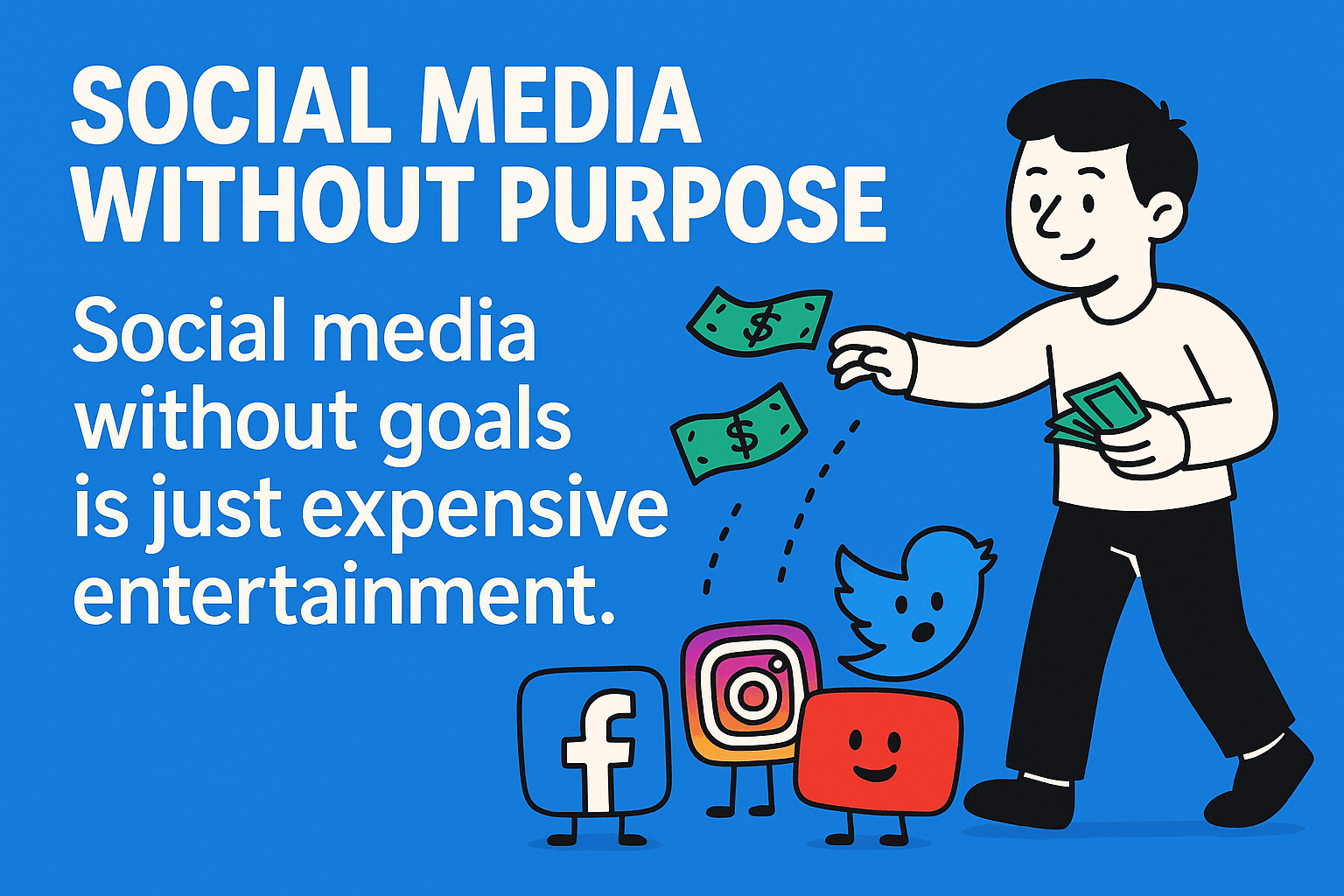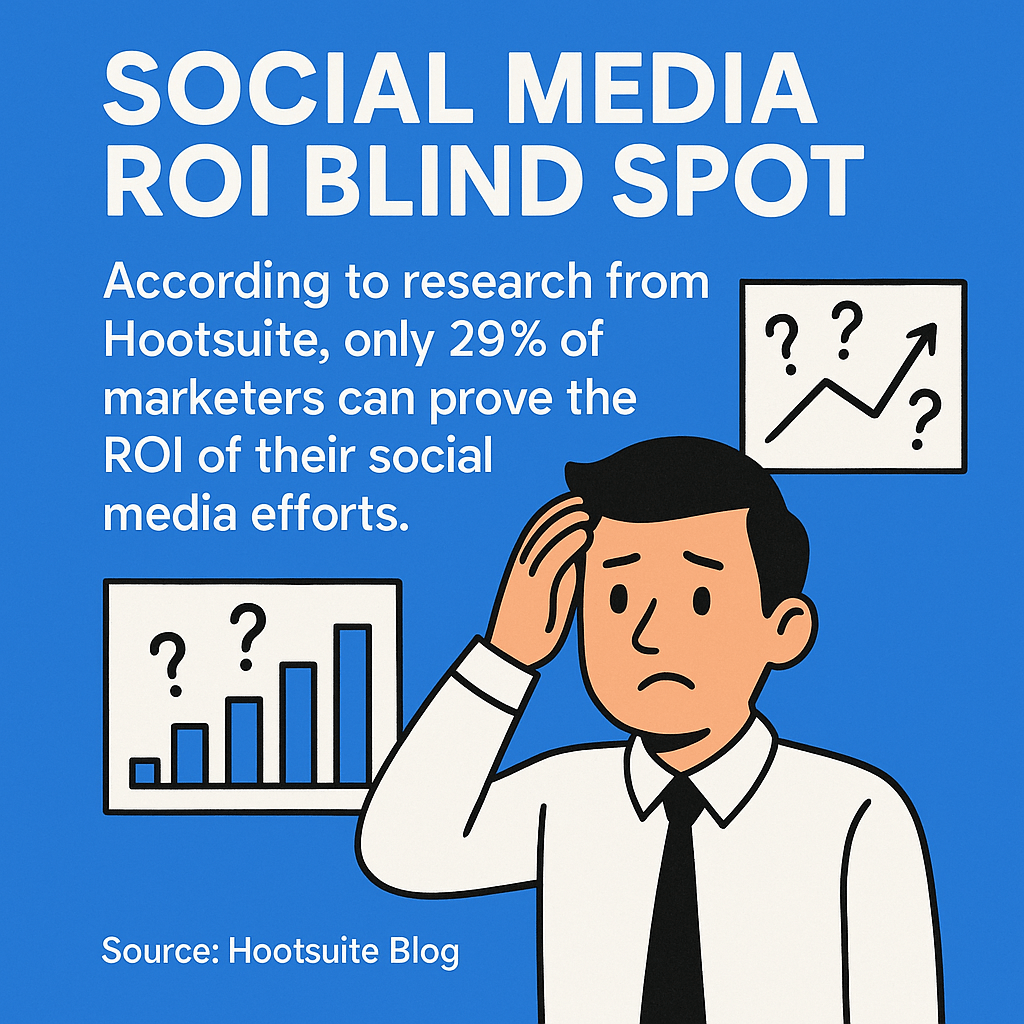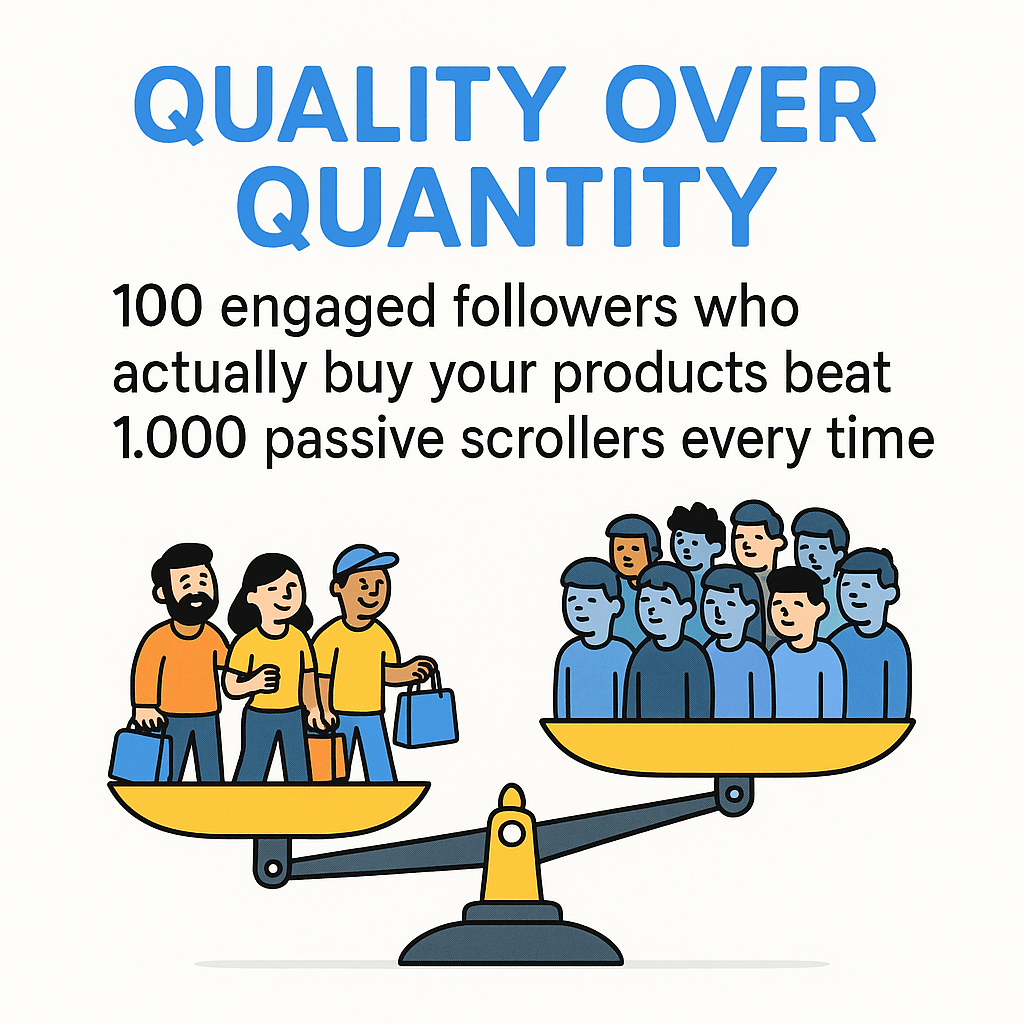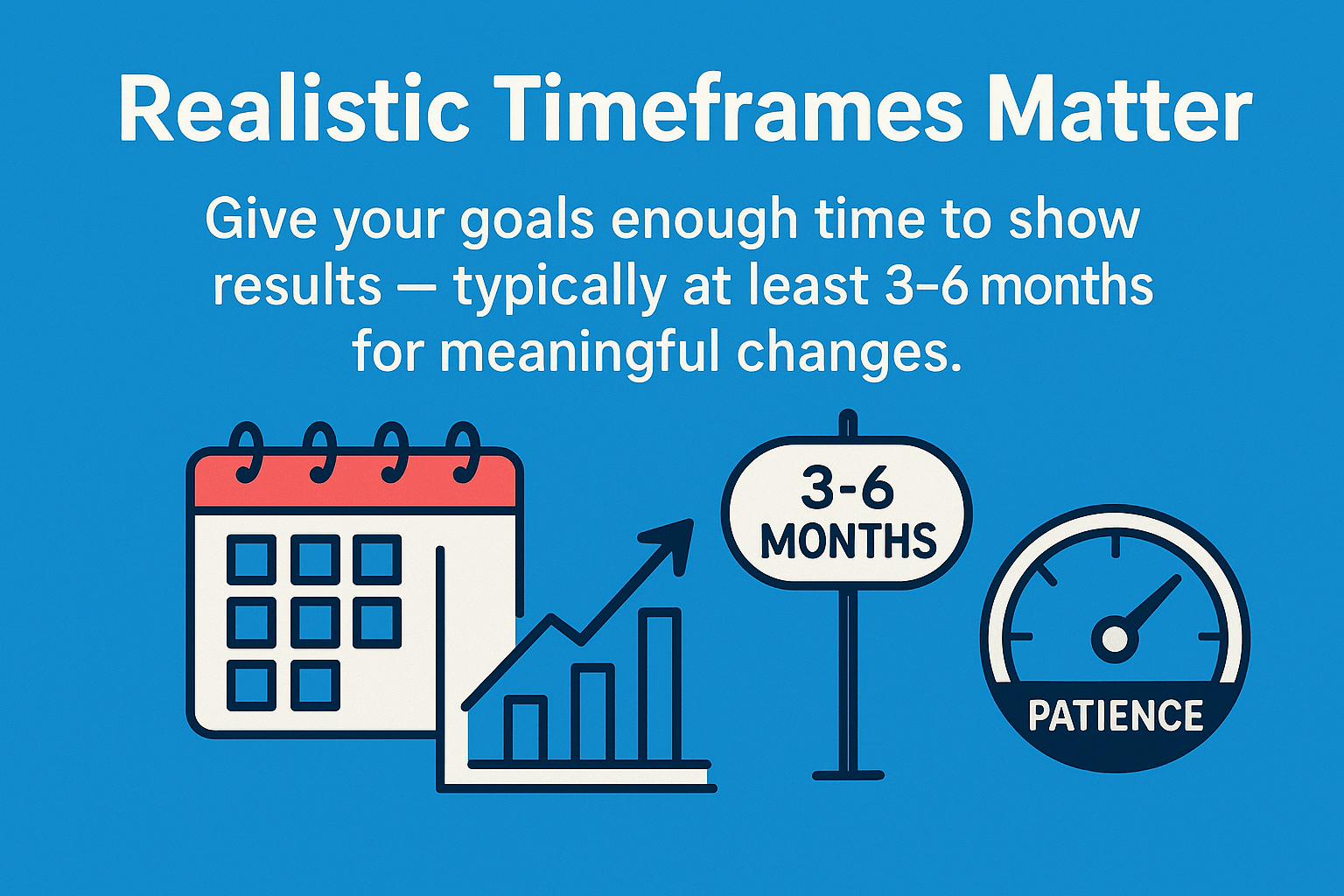Setting Effective Social Media Goals for Success
You know that feeling when you’re posting content into the social media void, hoping something sticks? We’ve all been there – throwing posts at the wall like digital spaghetti, wondering why our follower count isn’t budging or why engagement feels flatter than yesterday’s soda. The truth is, most marketers are flying blind because they haven’t set clear, measurable social media goals that actually align with their business objectives.

Here’s the thing: social media without goals is just expensive entertainment. Sure, you might get lucky with a viral post here and there, but sustainable growth comes from strategic planning. When you set specific, trackable objectives for your social presence, you transform random posting into a powerful marketing engine that drives real business results.
This guide walks you through everything you need to create social media goals that actually work. We’ll cover the SMART framework, show you exactly what good goals look like, and give you the tools to track progress like a pro. Plus, we’ll share some insider tips on avoiding the common mistakes that keep most brands stuck in the engagement doldrums.
## Why Social Media Goals Matter More Than You Think
Smart marketers know that every minute spent on social platforms should contribute to broader business objectives. Yet according to research from Hootsuite, only 29% of marketers can prove the ROI of their social media efforts (Source: Hootsuite Blog). That’s a massive blind spot that proper goal-setting can fix.

Goals give your social media strategy direction and purpose. Instead of posting random content and hoping for the best, you’ll know exactly what success looks like and how to measure it. This clarity helps you allocate resources more effectively, create content that actually converts, and provide stakeholders with concrete proof of your impact.
The most successful social media campaigns always start with crystal-clear objectives. Whether you’re building brand awareness, driving website traffic, or generating leads, having specific targets transforms your approach from spray-and-pray to sniper-level precision.
## The SMART Framework for Social Media Success
SMART goals aren’t just corporate buzzwords – they’re the foundation of any successful social media strategy. The framework ensures your objectives are Specific, Measurable, Achievable, Relevant, and Time-bound. When applied to social media, this structure eliminates the guesswork and creates accountability.
Let’s break down each component with practical social media examples. A vague goal like “get more followers” becomes “increase Instagram followers by 25% within three months through daily posting and influencer partnerships.” See how much more actionable that becomes?

The magic happens when you align these SMART goals with your business objectives. If you’re an e-commerce brand, your social goals should ladder up to sales targets. If you’re focused on thought leadership, engagement and reach metrics become more critical than direct conversions.
| SMART Component | Social Media Application | Example Goal |
|---|---|---|
| Specific | Define exact platform and metric | Increase LinkedIn post engagement rate |
| Measurable | Include numbers or percentages | Boost engagement by 15% |
| Achievable | Set realistic targets based on resources | Within current team capacity and budget |
| Relevant | Align with business objectives | Support lead generation efforts |
| Time-bound | Set clear deadlines | Achieve within 6 months |
### Step-by-Step Goal Setting Process
Start by auditing your current social media performance. You can’t set realistic targets without knowing your baseline metrics. Gather data on follower growth, engagement rates, website traffic from social, and any conversions you’re currently tracking.
Next, identify which business objectives your social media should support. Are you launching a new product? Trying to establish thought leadership? Looking to drive more qualified leads? Your social goals should directly contribute to these broader aims.
Research your competitors and industry benchmarks to set realistic expectations. Tools like Socialbakers or Sprout Social can help you understand what good looks like in your space. Don’t aim to double your engagement overnight – sustainable growth comes from consistent, strategic effort.
## Essential Social Media Goal Categories
Brand awareness goals focus on expanding your reach and getting your name in front of new eyes. These objectives typically center around follower growth, impression increases, and share-of-voice improvements. A solid brand awareness goal might be “increase monthly Instagram reach by 40% over the next quarter through consistent posting and strategic hashtag usage.”
Engagement goals dig deeper into how your audience interacts with your content. Rather than just counting likes, focus on meaningful metrics like comments, shares, saves, and click-through rates. Quality engagement often matters more than quantity – 100 engaged followers who actually buy your products beat 1,000 passive scrollers every time.

Conversion goals tie your social efforts directly to business outcomes. Whether you’re driving newsletter signups, product sales, or demo requests, these objectives prove social media’s bottom-line impact. For effective social media ROI measurement, track conversions from each platform separately to identify your highest-performing channels.
| Goal Category | Key Metrics | Example Target |
|---|---|---|
| Brand Awareness | Impressions, Reach, Followers | 50K monthly unique users on Facebook |
| Engagement | Likes, Comments, Shares, Saves | 5% average comment rate on LinkedIn posts |
| Traffic Generation | Click-throughs, Website visits | 1K monthly visits from Instagram Stories |
| Lead Generation | Email signups, Form completions | 200 qualified leads via Twitter campaigns |
| Sales/Revenue | Conversions, Revenue attribution | $5K monthly sales from Facebook ads |
## Tracking and Measuring Your Progress
The best goals in the world mean nothing if you can’t track progress toward them. Most social platforms offer robust analytics, but the key is knowing which metrics actually matter for your specific objectives. Vanity metrics like total follower count can be misleading – focus on metrics that correlate with business results.
Set up a regular reporting cadence that matches your goal timeframes. If you’re working toward quarterly objectives, monthly check-ins allow for course corrections without constant micro-management. Use tools like Google Analytics to track social referral traffic and conversions, giving you the full picture of social media’s impact.
Create a simple dashboard that displays your key metrics in one place. Whether you use Google Data Studio, Buffer‘s analytics, or a custom spreadsheet, having all your data visible makes it easier to spot trends and identify opportunities for optimization.
Don’t forget to benchmark your performance against industry standards and competitors. What looks like slow growth might actually be above-average performance for your sector. Context matters when evaluating success, and understanding your competitive position helps set realistic expectations with stakeholders.
## Common Social Media Objectives and How to Set Them
Growing your follower base remains a popular objective, but it requires strategic thinking to do effectively. Focus on attracting followers who match your target customer profile rather than just chasing numbers. A goal like “increase Instagram followers by 20% in Q2 through targeted content series and influencer collaborations” sets you up for quality growth (Source: Tability).
Boosting engagement rates challenges you to create content that resonates deeply with your audience. Rather than posting more frequently, focus on improving the quality and relevance of your content. Consider implementing proven social media strategies that encourage meaningful interactions, like asking questions, sharing user-generated content, or creating polls.
Driving website traffic from social platforms provides a direct connection between your social efforts and business outcomes. Set specific targets for each platform and track them separately – LinkedIn might excel at driving B2B leads while Instagram generates more e-commerce traffic. Use UTM parameters to track exactly which social content drives the most valuable visitors.
## Advanced Goal-Setting Strategies
Once you’ve mastered basic social media goals, you can explore more sophisticated objectives that provide deeper business value. Customer retention goals might focus on how social media keeps existing customers engaged and reduces churn rates. Brand sentiment tracking helps you understand not just how many people are talking about you, but how they feel about your brand.
Industry benchmarks provide crucial context for your goal-setting process. What constitutes good engagement varies dramatically between B2B and B2C brands, and between different industries. Research industry reports and competitor analysis to ensure your targets are both ambitious and achievable (Source: Network Solutions Blog).
Consider setting tiered goals that account for different scenarios. Your stretch goal might be 30% follower growth, while your baseline target is 15%. This approach helps maintain motivation even if you don’t hit your most ambitious targets, and it provides flexibility when market conditions change unexpectedly.
| Advanced Goal Type | What It Measures | Best For |
|---|---|---|
| Customer Lifetime Value | Social media’s impact on repeat purchases | E-commerce and subscription businesses |
| Brand Sentiment | Positive vs. negative mentions | Reputation management and PR |
| Share of Voice | Your brand’s conversation percentage | Competitive positioning |
| Social Listening Insights | Audience needs and pain points | Product development and content strategy |
## Tools and Templates for Goal Tracking
The right tools can make or break your goal-tracking efforts. Native platform analytics provide solid baseline data, but third-party tools often offer more detailed insights and cross-platform reporting. Hootsuite and Later provide excellent analytics dashboards that consolidate data from multiple platforms.
Create templates that make regular reporting painless. A simple spreadsheet with columns for goal, current performance, target, and progress percentage gives you everything needed for quick status updates. Many teams find that visual progress bars or charts help stakeholders quickly understand performance at a glance.
Consider automation tools that can populate your tracking templates automatically. Zapier integrations can pull data from social platforms into Google Sheets, saving hours of manual data entry and reducing the risk of tracking errors.
For teams managing multiple clients or brands, develop standardized reporting templates that allow for easy comparison across accounts. Consistency in how you measure and report progress makes it easier to identify patterns and share best practices across different campaigns. When implementing these tracking systems, focus on building sustainable social media presence rather than just chasing short-term metrics.
## Avoiding Common Goal-Setting Mistakes
The biggest mistake we see is setting goals that sound impressive but don’t actually drive business results. Aiming for viral content or massive follower counts might feel exciting, but these vanity metrics rarely translate to meaningful outcomes. Focus on objectives that ladder up to revenue, lead generation, or customer retention instead.
Another common pitfall is setting unrealistic timeframes for goal achievement. Organic social media growth takes time, and expecting dramatic results within weeks often leads to disappointment and strategy pivots that prevent real progress. Give your goals enough time to show results – typically at least 3-6 months for meaningful changes.

Don’t forget to account for seasonality and external factors when setting social media targets. A retail brand’s holiday season goals should look very different from their summer targets. Similarly, B2B companies might see higher LinkedIn engagement during certain industry events or periods when their audience is most active professionally.
- Setting vague objectives without specific metrics or deadlines
- Focusing on vanity metrics that don’t connect to business outcomes
- Ignoring industry benchmarks and setting unrealistic expectations
- Failing to align social goals with broader marketing and business objectives
- Not accounting for seasonal trends or market conditions in goal-setting
## Measuring ROI and Business Impact
Connecting social media activities to actual business outcomes remains the holy grail for most marketers. Start by implementing proper tracking systems that follow users from social platforms through to conversion. UTM parameters, Google Analytics goals, and platform pixel tracking all contribute to a complete attribution picture.
Calculate the customer lifetime value of social media leads to understand the true impact of your efforts. A social campaign that generates fewer leads might actually be more valuable if those leads convert at higher rates or become long-term customers. This deeper analysis helps justify social media investments and guides budget allocation decisions.
Regular reporting with clear business impact metrics builds credibility with stakeholders and secures continued support for social media initiatives. Instead of just sharing engagement numbers, present data on how social media contributed to sales, lead quality, customer retention, or other business-critical outcomes.
For businesses looking to maximize their social media ROI, consider implementing proven marketing strategies that connect social activities directly to measurable business results. The most successful brands treat social media as a revenue-generating channel, not just a brand awareness tool.
## Creating Your Social Media Goal Action Plan
Start by conducting a thorough audit of your current social media performance across all active platforms. Document baseline metrics for key areas like follower growth, engagement rates, website traffic, and any current conversion tracking. This foundation data is essential for setting realistic improvement targets.
Map your social media objectives to specific business goals using a simple framework. If your company aims to generate 100 new leads per month, determine how social media will contribute to that target. Perhaps LinkedIn drives 30% of leads while Instagram focuses on brand awareness that supports overall conversion rates.
Develop a content strategy that supports your specific goals. If engagement is your primary objective, plan content types that encourage interaction like polls, questions, and user-generated content campaigns. For traffic generation goals, focus on valuable content that naturally drives clicks back to your website.
Set up tracking systems before launching new initiatives. Create your analytics dashboards, implement proper UTM coding, and establish reporting templates. Having measurement infrastructure in place from day one prevents data gaps and ensures you can quickly identify what’s working and what isn’t.
| Timeline | Action Items | Key Deliverables |
|---|---|---|
| Week 1-2 | Audit current performance and set baselines | Performance benchmark report |
| Week 3-4 | Define SMART goals and success metrics | Goal-setting document with targets |
| Month 2 | Implement tracking systems and reporting templates | Analytics dashboard and reporting schedule |
| Month 3+ | Execute strategy and monitor progress | Regular performance reports and optimizations |
## Optimizing Goals Based on Performance Data
Regular goal review sessions help you identify trends and make data-driven adjustments to your strategy. Monthly check-ins work well for most objectives, though some fast-moving campaigns might benefit from weekly reviews. The key is consistent evaluation without constant micro-adjustments that prevent strategies from gaining momentum.
When performance exceeds expectations, resist the urge to dramatically increase targets mid-campaign. Instead, use over-performance as an opportunity to test new tactics or expand successful approaches. Similarly, if you’re falling short of goals, analyze the root causes before making hasty changes to your strategy.
A/B testing different approaches helps optimize your path to goal achievement. Test various content types, posting times, and engagement tactics to identify what resonates most with your audience. Document these learnings to improve future content planning and goal-setting processes.
Use performance data to refine your understanding of what drives business results through social media. You might discover that video content generates more engagement but static posts drive more website traffic. These insights help you allocate resources more effectively and set more accurate future goals.
The most successful social media strategies evolve based on real performance data rather than assumptions or industry best practices. Your audience’s preferences and behaviors are unique, and your goals should reflect the specific tactics that work best for your brand and objectives.




